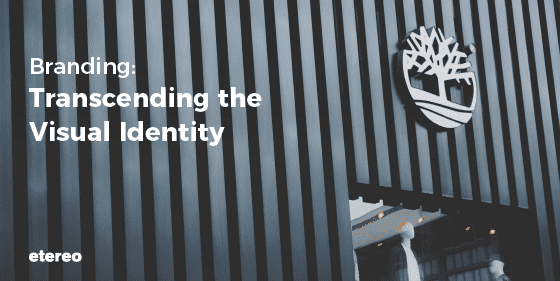Branding: Transcending the Visual Identity

Millions of companies exist in today’s competitive economic landscape and day by day, this number increases exponentially. In the constant ebb and flow of companies that drift in and out of the sea of obscurity, how do you ensure that your organisation remains focalised in the eyes of your consumers?
“I have a logo,” you might say. “That helps my company to stand out.”
Of course, a logo is a visual marker or identifier of your organisation that aids consumers in differentiating your company from the rest with a single glance.

However, there are millions of companies all over the globe, which means that your logo is competing against theirs. Even if your consumers manage to identify you in a sea of brands, will they remember you, and would they want to return?
Reason to Remember, Reason to Return
Think of your brand as a full-length novel. The name of your company would be the novel’s title, while your logo is its cover page. Your brand’s personality, key messages, quality, and brand experience are the events that transpire throughout the novel.
The cover page of the novel will attract readers, but only up to a certain extent. If it is eye-catching, readers might decide to give it a read. However, without substance – a consistent theme, or a sequential chain of events – the book would be confusing to read. The novel would jump about, from event to event, without a linear train of thought, resulting in a garbled story that lacks meaning and engagement.

Similarly, should an organisation depend solely on a logo and a website to engage and retain her consumers – perhaps, for the first time that consumers are exposed to the brand – they will give her a try. However, once they go in-depth into the brand and realise that there is no substance – in terms of consistent brand experience and engagement, the company would find herself hard-pressed in retaining their loyalty. For example, feedback and follow-ups serve as a small part of brand engagement, and are crucial to your brand, because they serve as touchpoints to impress your consumers.
Therefore, visual identity alone is insufficient for converting cold leads into returning, satisfied customers, because there is no compelling reason for them to return. Best-selling authors do not write novels by first deciding on the cover page of their novel, so why should you run your business with only a visual representation of her?
Compelling your Target Audience
To capture and hold the attention of your target audience, your organisation needs to transcend visual identify and solidify two principles in their minds. First, a reason to remember you and second, a reason to return to you.
What then, compels them to remember and return to you?

In today’s materialistic world, consumers need to give meaning to their purchases. When you give them a meaning that accompanies their transaction, you are compelling them to return.
When you brand, you add substantial value and meaning to your products and services. Neuroscientists have proven that emotional recall outlives facts. Consumers must be emotionally compelled to show loyalty to a brand, so tell a convincing, captivating story that accompanies your products and services to your consumers and leave them hungry for more.
Your Brand is your Story
In essence, branding is about portraying the brand you aspire to be and being the brand that your consumers want to purchase from. It is a mixture of strategy, psychology, and creative thinking and shapes the perception of your target audience into the image you want them to have of your brand.
By treating your brand as a narrative, you allow your organisation to take on the shape of a story. Doing so will give your consumers an entertaining and collaborative avenue for acquiring knowledge about your brand, even as you shape their minds.
A good brand strategy transcends visual identity and delves deeply into an internal system that primarily considers the organisation’s positioning, personality, and messaging strategy, prior to the external communication of messages to consumers.
Begin with the foundation of a clearly defined framework. No two brands are alike, and every business has her core competitive advantage. Find it, foreground it, and you will have the makings of the right brand strategy in place.

Following that, map out a plan of brand expression that your brand can then follow consistently for the next few years to shape the image of your brand in the minds of your consumers.
The moment that a business influences the lives of her consumers is the moment that a brand comes alive. She has earned her consumers’ loyalty.
Back to the Basics
Should you find your entity stuck in the situation above, a rebranding exercise would be wholly beneficial for your business. Transition from old to new through a rebranding exercise and refocus your brand so that she can better connect with her target audience.
Go beyond capturing their attention, to capturing their hearts.
“But I don’t know how to go about crafting a brand system,” you might say in exasperation. “I’m worried about the future of my brand. How do I go about doing it?”

Fret not. Bring the different pieces of your story to us – we will help you thread them together, bit by bit, into a breath-taking story about your brand that will leave your readers enraptured and hungry for more.
If you’re planning to create or refresh your brand, Etereo is a great place to start. You can contact us below for more information on our branding services.